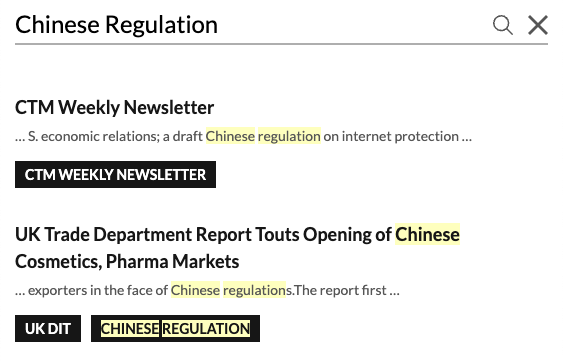A new paper by legal scholar Henry Gao looks at how China’s perspective on the WTO has changed over the years, from initially viewing it as "the symbol for its aspiration to integrate into the world economy," to trying to "assimilate the Chinese economic system with that of the market-based multilateral trading system," and finally "to increasing alienations with the core values of WTO in response to the attacks on its economic system."
The paper begins by going through the various stages of China's engagement with the WTO and the trading system, covering the "aspirational" pre-WTO stage; the "assimilation" period of 2001-2008; the "awakening" period of 2008-2012, in which tensions between China and others began to rise; the "alternative" period of 2013-2015, in which the TPP, RCEP, and Belt and Road all emerged; and the "attack" of 2016-2020, in which the Trump administration led unilateral, plurilateral, and multilateral attacks on China's role in the trading system.
With that as background, the paper moves to the current "affirmation" and "alienation" stage of China's participation in the WTO.
In terms of affirmation, Gao notes that "while many of these measures against China posed challenges to China’s foreign trade, the fact that the US abandon[ed] its long-standing position as the champion of the rules-based multilateral trading system left a power vacuum that China was eager to fill by affirming the principles of WTO." China was able to step into the role of leader through speeches by President Xi; further liberalization of trade and investment; efforts to promote trade and investment such as RCEP and the CAI; leading WTO negotiations on certain issues; and teaming up with the EU and other WTO Members to establish the Multi-Party Interim Appeal Arrangement.
Second, as to alienation, Gao says that "by disregarding WTO rules for political conveniences, the US and the EU also set 'bad examples' which China quickly picked up." In this regard, China imposed its own additional tariffs as part of the China-U.S. trade war, and in that way "lost its innocence"; the China-U.S. Phase One deal is of "dubious legality" under WTO law; China copied the blatant violations carried out by the United States, for example, China's trade restrictions on Australia and Canada; China used its power to block the appointment of a Taiwanese official to be Chair of the Government Procurement Committee; and China "appealed into the void" a panel report that it lost.
Gao concludes with the following suggestions for other governments "to help steer China back towards a more receptive position on WTO."
First, "the West need to abandon their own double standards." For example, "[t]hey should stop applying the non-market economy methodology in antidumping investigations against China, despite explicit provisions supported by negotiating history affirming its expiration in 15 years"; "[t]hey should stop applying WTO-inconsistent tariffs, while accusing China of violating WTO rules"; and "[t]hey should allow China to invoke the exceptions clause to justify its export restrictions on raw materials and rare earth, while applying restrictions against Chinese imports on environment grounds."
Second, these governments should make "proposed rules neutral on [their] face so that [they] would not be deemed as China-specific or discriminatory against China so as to avoid evoking China’s painful memory of the 'century of humiliation', which would put China in a defensive mode"; "instead of holding the negotiations in a one-sided manner with a long list of demands on China, try to make it more balanced by giving China something in return, even if just as a token, so as to give 'face' to China"; and finally, "try to understand China’s own reform goals and policy movements, so as to gain insights on what China may agree to."

